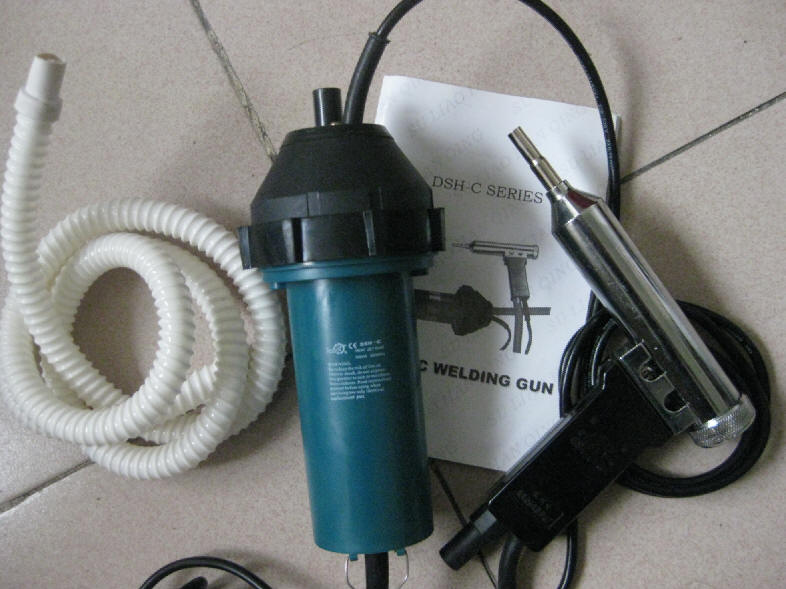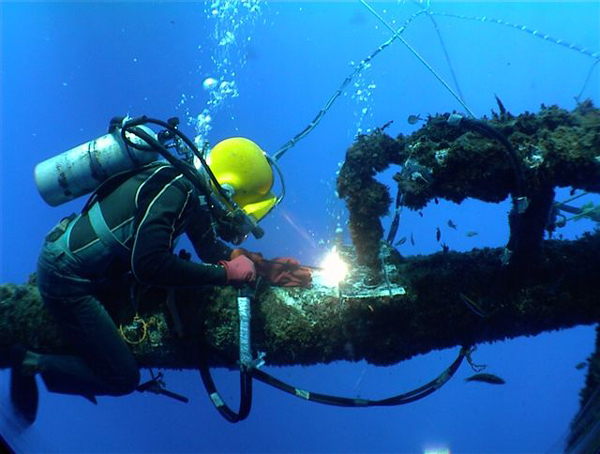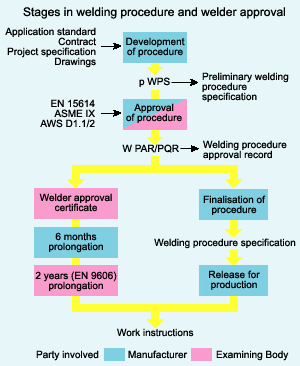What is Friction Welding ?
Friction welding is a method for making welds in which one component is rotated relative to, and in pressure contact, with the mating component to produce heat at the faying surfaces. The weld is completed by the application of a forge force during or after the cessation of relative motion.
 Friction Welding Process
Friction Welding Process
Friction welding is a completely mechanical solid-phase process in which heat generated by friction is used to create the ideal conditions for a high integrity welded joint between similar or dissimilar metals. In its simplest form, friction welding involves holding two components in axial alignment. Then rotate them under pressure causing the interface to heat up.
Friction welding (FW) is a class of solid-state welding processes that generates heat through mechanical friction between a moving workpiece and a stationary component, with the addition of a lateral force called “upset” to plastically displace and fuse the materials. Technically, because no melt occurs, friction welding is not actually a welding process in the traditional sense, but a forging technique. However, due to the similarities between these techniques and traditional welding, the term has become common. Friction welding is used with metals and thermoplastics in a wide variety of aviation and automotive applications.
Friction welding is a versatile process, meaning it is suitable for producing a wide variety of part shapes, materials and weld sizes. Applications that can be friction welded include hydraulic piston rods and cylinders, aircraft and aerospace components, cutting tools, drill pipes, tunnelling rods, agricultural machinery, automotive parts such as drive shafts, oil field pieces, air & waste canisters, military equipment, electrical connectors, chemical and pump shafts, swivel pins, track rollers and turbo chargers. Materials which can be friction welded include nickel alloys, low and medium carbon, micro alloyed, case hardened, heat and corrosion resistant, nitriding and carburising steels, and titanium. Friction Welding offers substantial cost savings in numerous applications. The weld strength normally equals or exceeds parent material strength. In friction welding, joining occurs below the melting pints of the metals involved. Two pieces are held in axial alignment, while one is rotated and thrust against the other. This process allows the use of dissimilar metals to be readily joined.
The combination of fast joining times (on the order of a few seconds), and direct heat input at the weld interface, yields relatively small heat-affected zones. Friction welding techniques are generally melt-free, which avoids grain growth in engineered materials, such as high-strength heat-treated steels. Another advantage is that the motion tends to “clean” the surface between the materials being welded, which means they can be joined with less preparation. During the welding process, depending on the method being used, small pieces of the plastic metal will be forced out of the working mass (flash). It is believed that the flash carries away debris and dirt.
Friction Welding Basic Principle
Another advantage of friction welding is that it allows dissimilar materials to be joined. This is particularly useful in aerospace, where it is used to join lightweight aluminum stock to high-strength steels. Normally the wide difference in melting points of the two materials would make it impossible to weld using traditional techniques, and would require some sort of mechanical connection. Friction welding provides a “full strength” bond with no additional weight. Other common uses for these sorts of bi-metal joins is in the nuclear industry, where copper-steel joints are common in the reactor cooling systems and in the transport of cryogenic fluids, where friction welding has been used to join aluminum alloys to stainless steels and high-nickel-alloy materials for cryogenic-fluid piping and containment vessels.
In the automotive sector the drive to build more fuel efficient vehicles has led to the increased use of aluminium in an effort save weight, which also improves recyclability when the vehicles a scrapped. Friction stir welding is being use increasingly to replace fusion welding techniques when alumnium alloys are involve the main advantage being low distortion and the ability to weld awkward materials material combination The process has already been applied to the manufacture of tail light panels by Marine Aluminium Aanensen in Norway, and SAPA in Sweden have recently taken delivery of a new friction stir welding machine from ESAB for the production of automotive parts. However, the technique has not yet been adopted in production for the fabrication of aluminium tanks for bulk road transport of liquids and powders.
Friction welding is also used with thermoplastics, which act in a fashion analogous to metals under heat and pressure. The heat and pressure used on these materials is much lower than metals, but the technique can be used to join metals to plastics with the metal interface being machined. For instance, the technique can be used to join eyeglass frames to the pins in their hinges. The lower energies and pressures used allows for a wider variety of techniques to be used.
You might also like
| What is Plastic Welding ? Welding Plastic Definition Plastic welding... | Underwater Welding How does Underwater Welding Works ? Underwater... | Welding Positions What`s Kind of Welding Positions ? Welding... | Welding Procedure What Are Welding Procedures ? A Welding... |




 Alloy Suppliers
Alloy Suppliers
 Aluminum
Aluminum
 Aluminum Extrusions
Aluminum Extrusions
 Copper-Brass-Bronze
Copper-Brass-Bronze
 Nickel
Nickel
 Magnets
Magnets
 Stainless Steel
Stainless Steel
 Stainless Steel Tubing
Stainless Steel Tubing
 Steel Service Centers
Steel Service Centers
 Titanium
Titanium
 Tungsten
Tungsten
 Wire Rope
Wire Rope